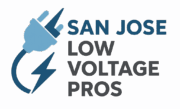Is Low Voltage a Problem?
Introduction
Electrical systems are designed to operate within specific voltage ranges. When the supply dips below those levels, it’s known as low voltage. At first glance, it may not sound serious—after all, it’s “low.” But in reality, low voltage can be a significant problem, leading to malfunctioning appliances, power losses, safety hazards, and costly damage to sensitive equipment.
This article explores whether low voltage is truly a problem, its causes and consequences, industry definitions, and practical solutions to prevent damage in homes, businesses, and industrial environments.
At San Jose Low Voltage Pros, we specialize in providing safe and efficient solutions for both residential and commercial properties.
Table of Contents
- What is Low Voltage?
- Causes of Low Voltage Problems
- Why Low Voltage is a Problem
- Signs of Low Voltage Issues
- Safety Concerns of Low Voltage
- How to Fix Low Voltage Problems
- Common Misconceptions About Low Voltage
- Future Trends in Voltage Management
- Conclusion
- FAQs
What is Low Voltage?
In electrical engineering, “low voltage” has an official definition, but in everyday usage, it often refers to voltage drops in supply systems.
According to IEC 60038 standards:
- Low Voltage (LV): 50V–1,000V AC or 120V–1,500V DC.
- Extra-Low Voltage (ELV): Below 50V AC or 120V DC.
- High Voltage (HV): Above 1,000V AC.
👉 In the context of power supply, low voltage is a problem when the delivered voltage falls below the level required for equipment to run efficiently.
Causes of Low Voltage Problems
Several factors can lead to persistently low or fluctuating voltage, including:
- Overloaded power systems (common during peak demand).
- Undersized wiring or cabling that causes resistance losses.
- Faulty transformers or distribution equipment.
- Loose or corroded connections.
- Grid issues such as brownouts or load-shedding.
- Long transmission distances without voltage regulation.
Why Low Voltage is a Problem
Impact on Residential Systems
- Appliance Malfunction: Refrigerators, AC units, and washing machines may fail to start or run inefficiently.
- Shortened Lifespan: Motors draw higher current under low voltage, overheating components.
- Flickering Lights: A common household sign of unstable voltage.
- Safety Hazards: Overheating wiring increases fire risk.
Impact on Commercial and Industrial Systems
- Equipment Damage: Industrial motors and sensitive electronics are highly vulnerable.
- Production Downtime: Low voltage can halt manufacturing lines.
- Energy Waste: Machines consume more current, raising electricity costs.
- Financial Losses: Both operational disruption and repair/replacement costs.
📌 A 2023 IEEE paper highlighted that low voltage in industrial systems can reduce motor efficiency by up to 20% while significantly increasing heat buildup.
Signs of Low Voltage Issues
- Lights dimming or flickering.
- Appliances failing to start or tripping breakers.
- Reduced motor speed or overheating.
- Computers and electronics unexpectedly shutting down.
- Frequent power surges after low-voltage episodes.
Safety Concerns of Low Voltage
Contrary to popular belief, low voltage does not mean harmless. While the risk of shock may be lower at reduced levels, the secondary risks include:
- Electrical fires from overheated conductors.
- Equipment failure that may cause accidents (e.g., malfunctioning elevators, medical equipment).
- Arc flashes in some industrial scenarios where equipment compensates by drawing excess current.
👉 According to OSHA, even low voltage circuits can be dangerous if wiring is undersized or poorly maintained.
How to Fix Low Voltage Problems
Residential Solutions
- Use voltage stabilizers or automatic voltage regulators (AVRs).
- Upgrade wiring to handle load capacity.
- Reduce simultaneous high-power usage during peak demand.
- Have an electrician inspect for faulty breakers or loose connections.
Industrial & Commercial Solutions
- Install power quality monitoring systems.
- Use transformers with tap changers for voltage adjustment.
- Invest in uninterruptible power supplies (UPS) for sensitive electronics.
- Schedule preventive maintenance to detect weak points early.
Common Misconceptions About Low Voltage
- “Low voltage is safe.” → False. It can cause overheating, fires, and dangerous equipment failures.
- “It only affects small electronics.” → False. Industrial-scale motors and HVAC systems are equally at risk.
- “Low voltage just means dim lights.” → False. It can trigger costly operational downtime.
Low voltage issues can lead to poor equipment performance, overheating, or even safety hazards. You can learn more about the risks of low voltage in detail.
Future Trends in Voltage Management
With the rise of smart grids, renewable energy integration, and IoT-enabled monitoring, voltage management is evolving:
- Smart meters will help utilities detect voltage drops in real time.
- AI-driven grid management can predict and correct low-voltage events.
- Energy storage systems (batteries, supercapacitors) will stabilize supply.
- Microgrids may reduce transmission distance-related low voltage issues.
Conclusion
So, is low voltage a problem?
Yes—while the term might sound harmless, the effects can be costly, disruptive, and dangerous. Low voltage leads to equipment failure, inefficiency, higher bills, and even safety hazards.
Addressing low voltage proactively—through regular inspections, proper load management, and stabilizing technologies—is the key to protecting homes, businesses, and industries.
